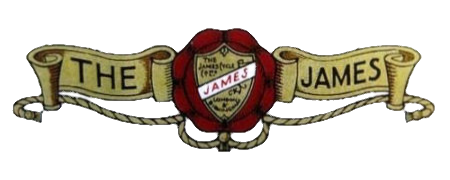

Gear box and power unit of the additional two-stroke model.
Following the lines of the I.O.M. and Grand Prix machines, the new sporting James is pleasing to look at and to ride
(Left) Aluminium chain cases and detachable and interchangeable wheels are the chief alterations to the 7 h.p. James outfit. Vee shaped Sterling leg-shields will also be substituted for the type shown.
(Right) The "Big Single" a sturdy example of the economical sidecar machine
CATERING FOR ALL TASTES.
Improvements in each of the James Models. Introduction of an Attractive Sports Machine.
WITH the conversion of the 3 ½ h.p. twin into a true sports model, there will be a 1922 James to suit every type of motor cyclist. In this policy the James Co. is almost unique, for the machines are made throughout at one factory, and not merely assembled, like the products of most other firms with an ultra-wide range of models.
In point of interest, the new sporting machine must come first. The 64x77 mm. (496 c.c.) V twin engine does not differ in general design from last year's, but its efficiency is such that a guaranteed speed of 60 m.p.h. may be obtained without special tuning. Neat and symmetrical long exhaust pipes, taper valve springs, hexagon nuts on the induction pipe, and separate lubricating leads to each cylinder and to the crank case are the chief alterations.
It is in the frame, tank, and bicycle parts that the biggest change is noticeable. These have been "cleaned up" or redesigned on the lines of this year's Isle of Man and Grand Prix models, resulting in a considerable weight reduction (200 lb. for taxation), and a wonderfully natural and comfortable riding position quite the best we have yet experienced. An exceptionally wide tank (which holds two and a quarter gallons) and careful consideration of Handle-bar and footrest angles are chiefly responsible for this feeling of comfort.
Transmission is by chain, through a James three-speed box with clutch and kick-starter; light chain guards only are fitted; and a polished aluminium gate die-cast, like the majority of the aluminium castings on all the models improves the appearance of the gear- chain mechanism.
The gear ratios are 5, 6.9, and 10.25 to 1. Internal expanding brakes are fitted to both wheels, the front one following the lines of that fitted to the company's pedal cycles for many years.
At £105, this model represents a very attractive proposition to the sporting soloist. Quite in a different class, the 4 ½ h.p. (86x103 mm. = 598 c.c.) single is primarily intended for economical side-carring, and has also undergone much improvement for 1922. It is now an easy task to remove the cylinder, the design of which has been modified. Framework and cycle parts have, again, been cleaned up and lightened, and 28x3 in. tyres have been standardised. As on the sports model, a light guard only covers the rear chain in this case, a Brampton spring link and an aluminium gate is fitted. The rear brake is internal expanding. The sidecar chassis has been entirely redesigned, and the bodywork has been improved in minor details. With sidecar, the price is £135.
So successful has been the 7 h.p. sidecar outfit this year that only improvements in what may be termed convenience have been made. All three wheels are quickly detachable and interchangeable, and it is proposed to incorporate a speedometer drive which will remain in situ when the front wheel is removed. Oil-bath cast aluminium chain cases replace the light guards hitherto fitted, and the brake pedal is now offset to give easier operation.
Other Models.
All the well-known features of the 73 x 89.5 mm. (749 c.c.) engine, the staggered fins, the offset exhaust valves, and the valve and tappet covers are retained, as is the heel-operated clutch. Brampton type forks are fitted; but on the other James models only the vertical parallel motion is retained. The outfit, with screen, grid, etc., sells at £160.
The standard 2 ¼ h.p. (66x70 mm. =239 c.c.) two-stroke has been least altered of all. It will be remembered that this model has a double chain drive to the countershaft, a dog clutch giving high and low gears. An additional model will now be marketed with a conventional two-speed gear box with clutch and kick-starter. Both the lightweights, which are respectively £60 and £65, now have internal expanding front brakes, and are fitted with the new lightweight M-L magneto, recently described in The Motor Cycle.
The Motor Cycle, October 20th, 1921. p473